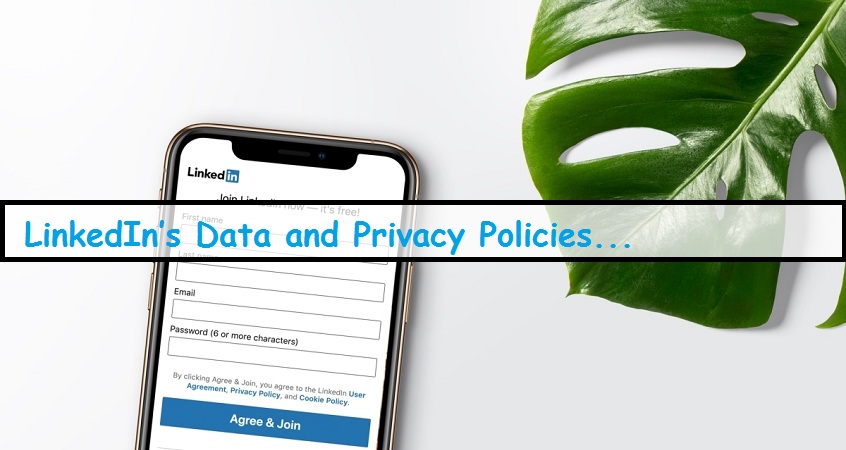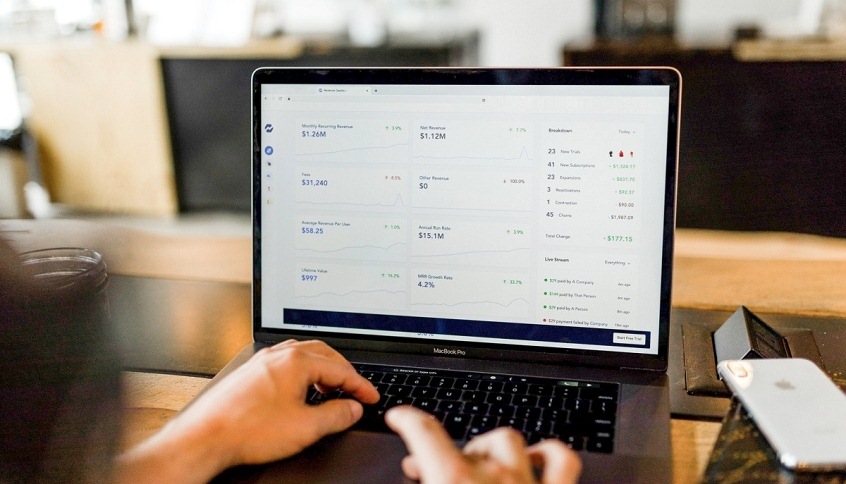LinkedIn is a social networking platform primarily designed for business professionals to connect. It is ideal for building connections for freelance work, potential partners, or simply to keep your job prospects open. Moreover, it is the most popularly used platform for B2B social media marketing. If it is a part of your digital marketing program or you plan to make it so—you need to be through with LinkedIn’s Data and Privacy Policies.

LinkedIn started out as a social network linking businesses and potential employees. However, now it has evolved into so much more.
Worldwide, there are around 700 million LinkedIn accounts that provide their personal information to it. So, how does it work, and how LinkedIn deals with your data and privacy? Read below to find out.
LinkedIn’s data and privacy policies
1. Data Collection

1.1 Data provided by you-
- Registration- Personal information like your name, email address and/or mobile number, password, credit card details, and billing information.
- Profile Information- Information provided on the profile such as education, work, skills, photos, endorsement, and location. Also, Calendars and Schedules.
- Posting and Uploading- Personal data that you provide, post, or upload to their Services, such as when you fill out a form, respond to a survey, or submit a resume or fill out a job application on LinkedIn. If you opt to import your address book, they also receive your contacts.
1.2 Data from Others-
LinkedIn collects public information about you, such as professional-related news and accomplishments, and makes it available as part of their services, including, as permitted by your settings, in notifications to others of mentions in the news.
1.3 Service Use-
LinkedIn log your usage data when you visit and use their Services, including mobile apps. To identify you and log your use LinkedIn uses log-ins, cookies, device information, and internet protocol (“IP”) addresses.
1.4 Cookies and Similar Technologies-
As further described in their Cookie Policy, they use cookies and similar technologies to collect data to recognize you and your device(s) on, off, and across different services and devices where you have engaged with their Services.
1.5 Your Device and Location-
LinkedIn receives data from your devices and networks which also includes location data.
1.6 Messages-
If you communicate through their Services, LinkedIn learns about that too.
1.7 Workplace and School Provided Information-
When your organization (e.g., employer or school) buys a premium Service for you to use, they give LinkedIn data about you.
1.8 Sites and Services of Others-
LinkedIn gets data when you visit sites that include our ads, cookies, or some of their plugins or when you log-in to others’ services with your LinkedIn account.
2. Share your information:

2.1 Services-
Any data that you include on your profile and any content you post or social action (e.g., likes, follows, comments, shares) you take on LinkedIn Services will be seen by others, consistent within your settings.
2.2 Communication Archival-
Regulated Members may need to store communications outside of their Service. Some Members need, for legal or professional compliance, to archive their communications and social media activity, and will use the services of others to provide these archival services. LinkedIn enables archiving of messages by and to those Members outside of our Services.
2.3 Others’ Services-
Users may link their accounts with others’ services. This way, the others may be able to look at your information like- contacts’ profiles, shared posts, etc. They may also enable you to start conversations with your connections on such platforms. Bits from your profile may also be displayed on the services of others. In fact, depending upon your settings, other services may look up your profile. Also, your personal data will become available to them when you link your account with other services. When you opt to link the accounts, sharing and use of that personal data will be described in, or linked to, a consent screen.
2.4 Related Services-
LinkedIn will share your personal data with their affiliates to provide and develop their Services. They may combine information internally across the different Services.
2.5 Service Providers-
LinkedIn uses others to help provide their Services (e.g., maintenance, analysis, audit, payments, fraud detection, marketing, and development). They will have access to your information as reasonably necessary to perform these tasks on LinkedIn’s behalf and are obligated not to disclose or use it for other purposes.
2.6 Legal Disclosures-
It is possible that LinkedIn will need to disclose information about you when required by law, subpoena, or other legal process or if LinkedIn has a good faith belief that disclosure is reasonably necessary to
(1) investigate, prevent or take action regarding suspected or actual illegal activities or to assist government enforcement agencies;
(2) enforce our agreements with you;
(3) investigate and defend ourselves against any third-party claims or allegations;
(4) protect the security or integrity of our Services (such as by sharing with companies facing similar threats); or
(5) exercise or protect the rights & safety of LinkedIn (its members, personnel, and the likes).
LinkedIn attempts to notify the members about legal demands for their personal data when appropriate in our judgment unless prohibited by law or court order or when the request is an emergency. It may dispute such demands when it believes, that the requests are overbroad, vague, or lack proper authority, but it doesn’t promise to challenge every demand.
2.7 Changes in Control or Sale-
LinkedIn can also share your personal data as part of a sale, merger, or change in control, or in preparation for any of these events. Any other entity which buys LinkedIn or part of their business will have the right to continue to use your data.
Final Word
What came out as an employer-employee linking social media platform has evolved into much more now. Most importantly, it has become a leading platform for B2B social media marketing. If you are one of such businesses, you need to be thoroughly familiar with its data and privacy policies. To sum up the point: Any information that LinkedIn shares with a third party is shared in compliance with their privacy policy. However, LinkedIn itself suggests that you should refrain from posting information that you wish not to be publicly available. By understanding these simple terms, you can safely use LinkedIn for your B2B business and get the best out of it.
Kindly leave a comment and tell us how you found this article. For more, digital marketing and social media updates stay connected with us!



